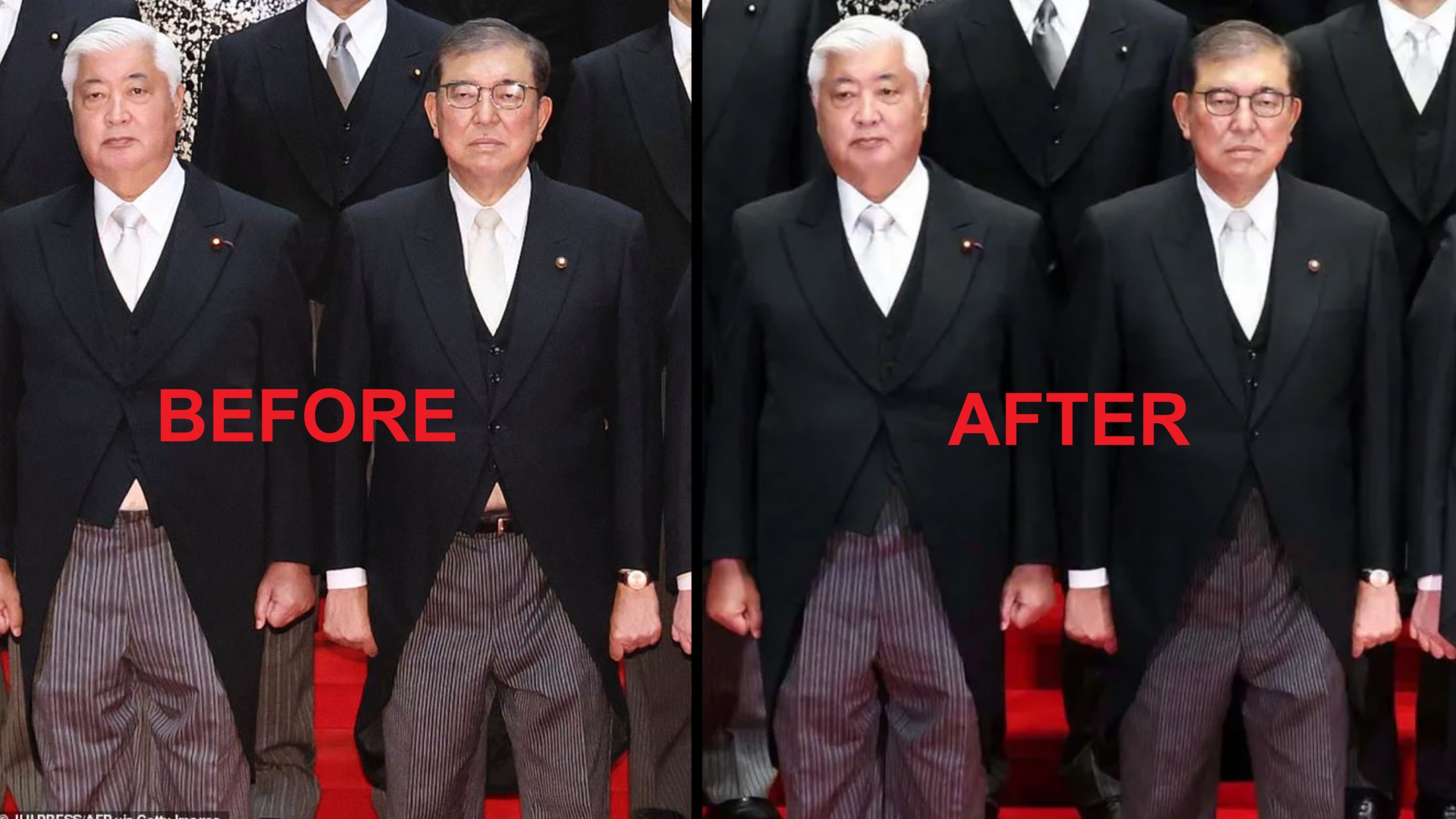JAPAN: The Japanese government has admitted that a photograph of its new cabinet lineup was edited.
The photographs taken by the Japanese media show visible small patches of white shirt under the suits worn by the new Prime Minister Shigeru Ishiba and the defence minister.
However, the official photographs issued by the prime minister’s office a few days ago showed that the unkempt appearance of the pictures was gone.
Furious #Japonese Govt officials have admitted editing a photograph of the country’s new cabinet.
The office of the Prime Minister, Shigeru Ishiba, released the portrait on October 1, but two ‘sartorially inelegant’ Ministers attire was subject to horror & ridicule. 🤦♂️🤣 pic.twitter.com/uQZVK5fCFs
— Mr Pål Christiansen (@TheNorskaPaul) October 7, 2024
The online community had a field day mocking the before/after photos until government representative Yoshimasa Hayashi admitted on Oct 7 that “minor editing had been made” to the image.
He said this was because group photos taken by the Prime Minister’s office “will be preserved forever as memorabilia.” He also said that “minor editing is customarily performed on these photos.”
The photos have been mocked online with a deluge of comments on social media.
“This is more hideous than a group picture of some seniors’ club during a trip to a hot spring. It’s utterly embarrassing,” wrote one individual on X.
Someone else posted on social media that the cabinet ministers were wearing suits in all the wrong sizes. In another comment, someone referred to the ministers as wearing “ill-fitting” trousers.
The photograph was taken during the first meeting of Japan’s new cabinet.
Ishiba became Japan’s new Prime Minister about a week ago as head of the Liberal Democratic Party. He replaces Fumio Kishida.
The new PM said he will hold a parliamentary election on Oct 27. However, opposition parties were unhappy with his decision, criticizing him for calling for a national election on such short notice.
According to a Reuters report, Ishiba told journalists in a press conference in Tokyo, “I believe it is important to have the new administration get the public’s judgment as soon as possible.”
Ishiba promised to continue to work hard at pulling Japan out of deflation, achieving salary increases and taking on challenges that Japan is currently facing, such as the declining birth rate and population.

